What to Fish
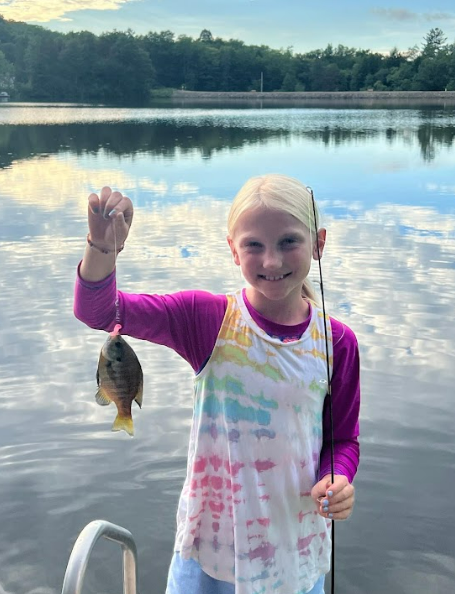
Bluegill
Bluegill are the smallest fish that can be fished for, but they are still fun, especially for beginners. Anywhere along the
coast will have bluegill. I find around blueberry point there are a lot of bluegill and they can be found in nests, which
is when they are most aggressive. Small jigs will work and worms work very well. I find that fly fishing in very shallow
water (1-2 feet) can lead to lots of catches and a fun day. However, in general, a closed face or spinning rod with a jig
or worm will work best. They stay small so light line and gear will be the best. They can fight hard and they are some of
the prettiest fish in the lake so they are great fish even though they are small.
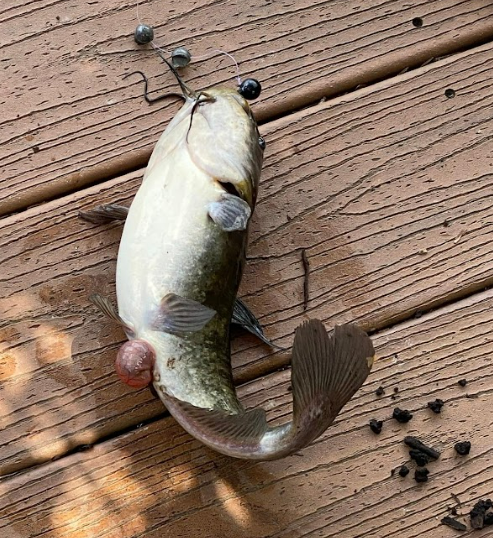
Catfish
Catfish can be some of the hardest fighting fish, and some of the biggest. They hunt by scent so fishing with catfish
scented bait or live bait. They can be caught trolling but if you’re specifically targeting catfish, scented bait out deep
is the most effective strategy. For example, hot dogs work even though it sounds weird. Make sure whatever bait you use
gets down to the bottom. As for rods, you need something fairly large to be able to handle a large fish. So, big spinning
rods or baitcasters are the best. Heavier line should also be used because of the size and because they can’t see the line
very well. While not a conventional game fish, they are a very fun fish to fish in Lake Mokoma.
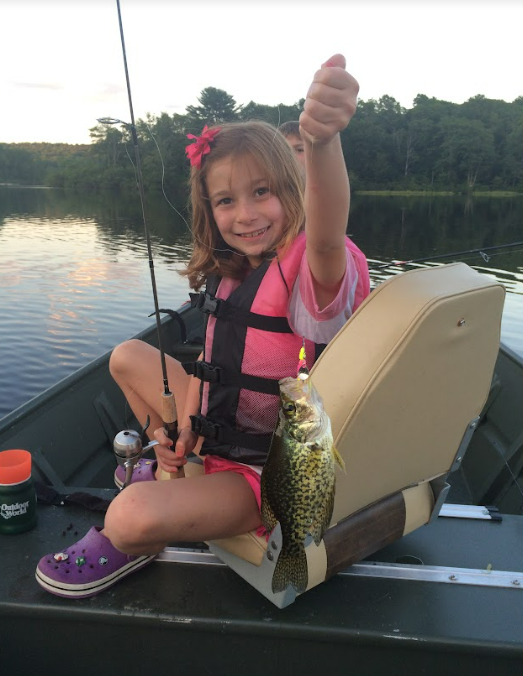
Crappie
Crappies are a great fish to eat, fun to catch, and can get big. Even better, fishing for them isn’t very difficult.
Structure in deep water is where you will most likely find these fish. Underneath the big dock is a hotspot, for example,
as long as you are cautious of swimmers. Any deep lily pads will also hold fish. Jigs or small spinners work great for
crappies. Jigging or trolling will work well but I find jigging will work best. If you want to use live bait, minnows or
even worms will work great. A small spinning rod or closed face rod will be sufficient for them. Line of at least 6 lb test
will work. Most of these are around 8 inches but there are some the size of dinner plates. They also fight very hard for
their size so these are one of the most fun fish to catch in Lake Mokoma.
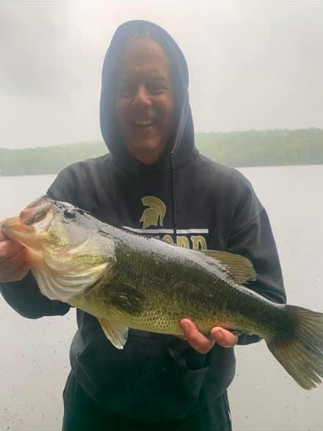
Largemouth Bass
Largemouth bass are one of, if not the most popular game fish. They are so much fun to fish for and catch. Best of all,
there are plenty of large healthy largemouth bass in Lake Mokoma. Ranging from babies the size of minnows to over 20 inch
fish, they all put up a fight. They will even jump on the end of your line trying to escape. So, how do you catch them?
Bass can be caught in many different ways depending on when and where you are fishing, but looking for cover works best.
Anywhere where smaller fish can hide is where these predators will be. If you can find structure in or near deep water,
it is almost guaranteed to hold fish. For example, deep lily pads and submerged stumps are great to hold fish. You can find
plenty of bass in shallow water as well, often in the shade of lily pads, docks, or trees. Trolling out deep can also work,
especially in the heat of the summer.
For lures, my personal favorites are spinnerbaits and wacky rigged senkos.Chartreuse,
purple, and brown with red flakes are my favorite colors but any will work. Plenty of other lures will work
as well. In the spring and fall when fish are aggressive, surface lures such as jitterbugs and buzzbaits can work, or are
at least fun to use. Other soft plastics work as well, such as sluggos and any salamander or crayfish impersonation. Jerk
baits and crank baits can also be effective but avoiding weeds and stumps can be an issue.
These fish can get big, so make
sure your rod and line is capable of handling bigger fish. 8-12 lb test should suffice. Spinning rods are great for plastics
while baitcasters are good for spinnerbaits, crankbaits, and buzzbaits, but both could be used for either. With practice,
you will find tricks and strategies that work for you. I highly recommend trying bass fishing because catching and fishing
for them is so much fun.
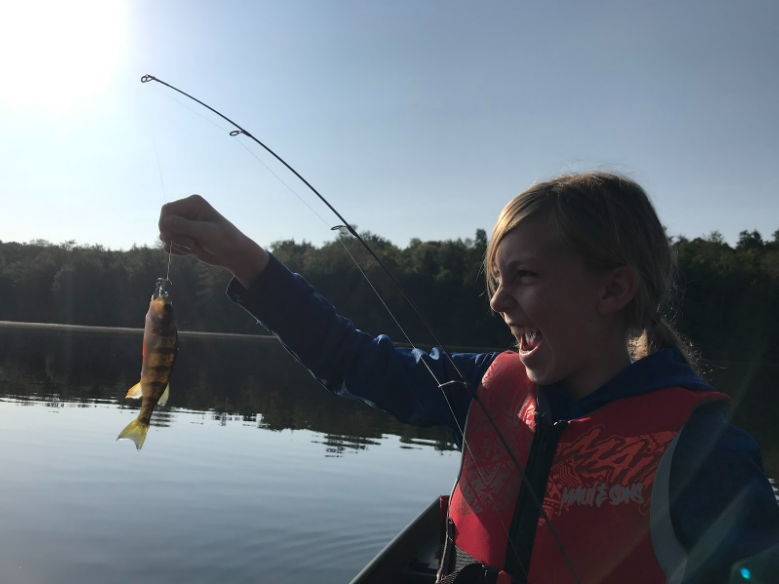
Perch
Perch are great fish to eat and are fun to fish for. Perch are known to school in deeper water. In this lake, you can find
them anywhere deep such as straight out from the castle. They are on the smaller side, 6-8 inches is average, but there are
some bigger. Knowing this, the best strategy for these fish are small jigs. Trolling with small inline spinners can work
and live bait should work really well for these fish. Make sure your lure is getting deep enough for these fish using
weight and by jigging. Since perch are schooling fish, if you find one, there will most likely be other fish nearby. This
can be great for beginners and young fishermen because a simple jig and closed-face reel can catch many of these fish. And,
if you can catch a lot, they are great to eat so I highly recommend trying perch fishing.
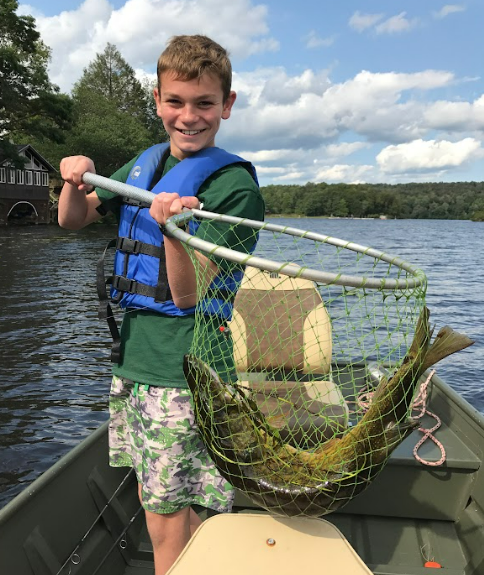
Pickerel
Pickerels used to rule the lake but the population and size of these fish are down, but you can still find some monsters.
These fish are really aggressive and territorial. So lures that bring a reaction from these fish work best such as
spinnerbaits. Surface lures such as jerkbaits, buzzbaits, and jitterbugs are also effective. Baitcasters are the best for
these fish because they are the best for the lures used and can easily handle even a large pickerel. Heavier line is also
recommended in order to handle larger fish and prevent their teeth from cutting the line. To find pickerels, fish in
shallow water in shade such as under trees, docks, or in lilly pads. Anywhere along the coast is good for finding pickerel
but the cove of Conklin Run and around Blueberry Point are both great spots. These fish are often considered pests because
they are big, toothy, and compete with the bass but they are still a fun fish to catch.
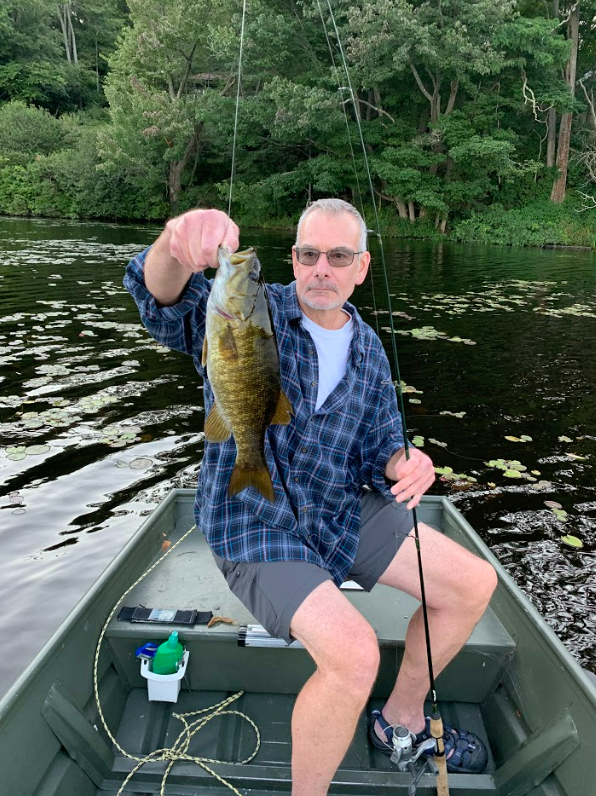
Smallmouth Bass
Smallmouth bass are probably the hardest-fighting fish when they are caught, making them super fun to catch. Though there isn’t
a lot in Lake Mokoma nor are they super large, you can still find them. These fish like deep, clear, cold water and Lake Mokoma
doesn’t have much of that so catching them is more likely in the fall and spring when the water is cooler and clearer. Looking
for rocky bottoms can work. Their primary food source is crayfish so using plastic crayfish works well. Crankbaits also work
well when they are drug across rocks and spinnerbaits can work too. TRDs rigged as dropshots also work really well but they are
both prone to weeds and getting stuck. Baitcasters or spinning rods should be used because of how hard the fish fight. As for
where, anywhere rocky with cool water should hold fish such as the dam and around the castle. However, it’s hard to target
these fish in Lake Mokoma because they are fairly scarce. Normally, I fish for largemouth bass and sometimes will catch a
smallmouth. It’s always a welcome surprise though, because these fish fight really hard, no matter their size.
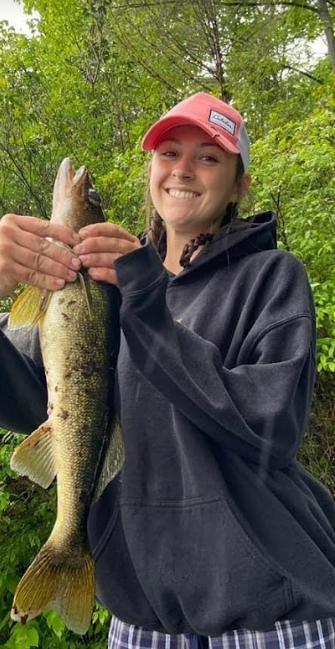
Walleye
Walleye were originally added to the lake to help control the perch population, but they have established themselves in the
lake. They can be huge, over 20 inches, and fight hard, always trying to get to deep water. They look evil and have big
teeth and rough body, so be careful when you catch one. In order to catch them, slow trolling in deep water with spoons or
even plastics works well. Oftentimes, when fishing for bass, you can catch a walleye. Walleye can be found anywhere in deep
water but near submerged cover such as stumps are where fish are most likely to be found. Nightcrawlers in deep water can
also be very fun. Since these fish are large, you need a bigger rod with at least 10 lb test. Baitcasters or spinning rods
are recommended. Walleye’s teeth can cut through the line so use a heavier line or a leader. Walleye are also great to eat,
making them one of the most fun fish in Lake Mokoma.







